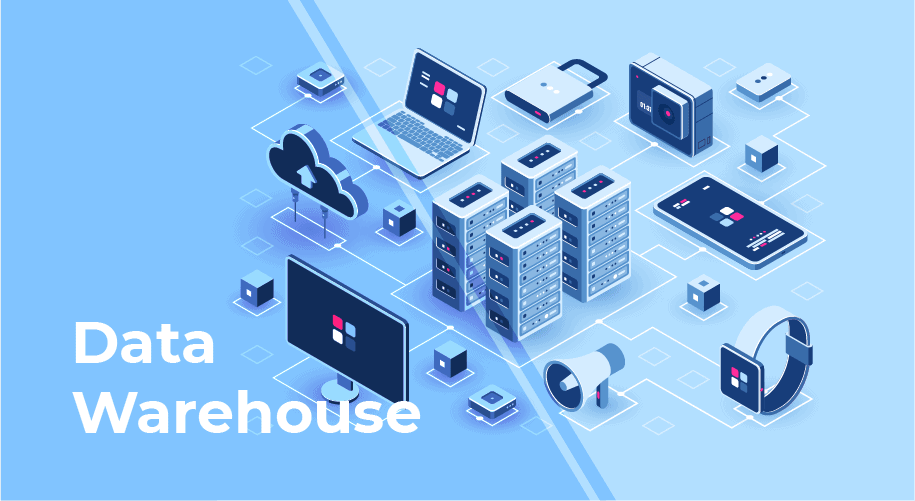Data Warehouse Buyer's Guide
Everything you need to know before investing in a data warehouse solution for your organization.

Introduction to Data Warehouses
A data warehouse is a central repository of integrated data from one or more disparate sources. It stores current and historical data that can be used for creating analytical reports for knowledge workers throughout the enterprise. The data stored in the warehouse is uploaded from the operational systems.
Why Your Organization Needs a Data Warehouse
In today's data-driven business landscape, organizations need to make informed decisions based on accurate, timely, and comprehensive data. A data warehouse provides a foundation for business intelligence activities that include:
- Centralized data storage for reporting and analysis
- Integration of data from multiple sources into a coherent whole
- Historical data analysis to identify trends over time
- Improved data quality through cleaning, reformatting, and validation
- Separation of analytical processing from operational processing
Key Considerations When Choosing a Data Warehouse
1. Cloud vs. On-Premises
One of the first decisions you'll need to make is whether to deploy your data warehouse in the cloud or on-premises. Cloud data warehouses offer scalability, reduced maintenance, and pay-as-you-go pricing, while on-premises solutions provide greater control over your data and infrastructure.
Cloud Data Warehouse Pros:
- Lower upfront costs
- Easier scalability
- Reduced maintenance burden
- Automatic updates and patches
On-Premises Data Warehouse Pros:
- Greater control over security
- Customizable infrastructure
- No internet dependency
- Potentially lower long-term costs for large deployments
2. Scalability
Your data warehouse should be able to grow with your organization. Consider both vertical scalability (adding more power to existing resources) and horizontal scalability (adding more resources) when evaluating solutions.
3. Performance
Query performance is critical for a data warehouse. Look for features like columnar storage, in-memory processing, and query optimization to ensure your analysts can get the insights they need without long wait times.
4. Integration Capabilities
Your data warehouse should easily connect with your existing data sources and BI tools. Check for native connectors, API support, and ETL/ELT capabilities.
5. Security and Compliance
Data security is non-negotiable. Ensure your chosen solution offers robust security features like encryption, access controls, and audit logging. Also, verify that it can help you meet relevant compliance requirements like GDPR, HIPAA, or SOC 2.
6. Total Cost of Ownership
Look beyond the initial price tag and consider the total cost of ownership, including:
- Licensing or subscription fees
- Infrastructure costs
- Implementation and migration costs
- Ongoing maintenance and support
- Training and staffing requirements
Top Data Warehouse Solutions in 2024
Cloud Solutions
- Snowflake: Fully managed, cloud-native solution with separate compute and storage
- Amazon Redshift: AWS's data warehouse service with strong integration with other AWS services
- Google BigQuery: Serverless data warehouse with built-in machine learning capabilities
- Azure Synapse Analytics: Microsoft's analytics service that brings together data integration, warehousing, and big data analytics
On-Premises Solutions
- Teradata: Enterprise-grade data warehouse with advanced analytics capabilities
- Oracle Exadata: Optimized for running Oracle Database with high performance
- IBM Db2 Warehouse: Data warehouse built on IBM Db2 database technology
- Microsoft SQL Server: Relational database with data warehousing capabilities
Implementation Best Practices
1. Start with a Clear Strategy
Define your business objectives, data sources, and reporting requirements before selecting a data warehouse solution.
2. Plan Your Data Architecture
Design your data model, ETL/ELT processes, and data governance framework to ensure your data warehouse meets your needs.
3. Implement in Phases
Start with a proof of concept or pilot project, then gradually expand your data warehouse to include more data sources and use cases.
4. Invest in Training
Ensure your team has the skills needed to manage and use your data warehouse effectively.
5. Monitor and Optimize
Continuously monitor performance, usage patterns, and costs to optimize your data warehouse over time.
Conclusion
Choosing the right data warehouse is a critical decision that can significantly impact your organization's ability to derive value from its data. By carefully considering your requirements, evaluating the available options, and following implementation best practices, you can build a data warehouse that serves as a foundation for data-driven decision making across your organization.
Remember that the best data warehouse solution is one that aligns with your specific business needs, technical requirements, and budget constraints. Take the time to thoroughly evaluate your options and consult with experts if needed to make the right choice for your organization.
Share this article
Subscribe to our newsletter
Get the latest insights on data engineering and analytics delivered to your inbox.